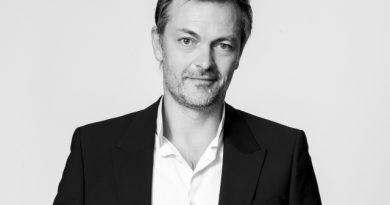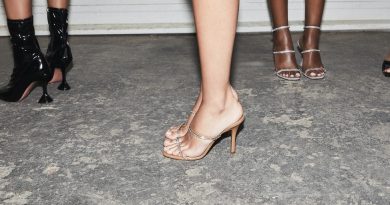For Fashion Brands, TV Show Placements Upstage Magazine Editorials | BoF Professional, News & Analysis
In November, the internet devoured a photo of the cast of the Gossip Girl reboot, lounging on the steps of the Metropolitan Museum of Art in New York like their mid-aughts predecessors Blair Waldorf and Serena van der Woodsen.
At the centre of the scene sat Canadian actress Jordan Alexander — and her croc-embossed kitten heel boots. For Schutz, the Brazilian brand that made the pair, the viral images were a code-red marketing opportunity. The company’s PR team sent out a media blast to fashion outlets and soon, headlines in titles like Harper’s Bazaar and Vogue told readers exactly where they could buy the cream-coloured boots themselves. The shoemaker has had to restock the style several times since November.
Schutz spent no money to have its product featured in the show. The brand had, however, spent years cultivating a relationship with Eric Daman, the costume designer on both the original Gossip Girl and its reboot.
“We’ve been pushing that shoe and that style for a while, in all our 360 [degree] communication … so at the end of the day, everything is connected and the marketing strategy exists behind one hero product,” said Schutz head of marketing Victoria Toni.
For most brands, having clothes or accessories prominently featured in a television show or movie is priceless exposure. That’s never been truer than during the pandemic when consumers spent endless hours watching and rewatching their favourite series. On New Year’s Day, the Gossip Girl Instagram account promoted its upcoming reboot with new images of the cast, like one of Alexander wearing a black corseted ball gown by Christopher John Rogers. Insecure’s Issa Rae and Yvonne Orji wear Opening Ceremony, Pyer Moss and Telfar. Emily in Paris drew mixed reviews from television and fashion critics alike, but plenty of viewers had Lily Collins in Chanel, Kenzo and Y/Project on their Pinterest boards.
Actress Alexa Demi’s coquettish character in Euphoria favoured matching sets like a floral-stamped denim Miaou number and purple I Am Gia cut-out two-piece, inspiring viewers to dig deeper. Data from Google shows that “Maddy from Euphoria outfits” has become a breakout search term since the show premiered in June 2019, and searches for “I Am Gia purple set” have spiked as well.
There is no set of rules for brands to get themselves featured on a major Hollywood production. There are paid placements, but more often, what actors wear is in the hands of wardrobe stylists and costume designers. Relationships with those people, ultimately, is what matters.
Arianne Phillips, a veteran costume designer who has worked on films like Quentin Tarantino’s “Once Upon a Time … in Hollywood” and Tom Ford’s “Nocturnal Animals” will tap vintage sources and costume rental houses to fill out a film’s wardrobe. Sometimes she designs clothes herself or works with a designer to create a unique piece. When she works directly with brands, it’s often a collaboration rather than a sales pitch.
“I’ll look at a lookbook and see if I respond to it, but I think that personal connection to the costume designer from the [brand’s] designer, that would be the way to get my attention,” she said.
Brands reach out directly to stylists on Instagram or through their agents. They’ll also send clothes and accessories to actors, hoping they’ll bring the pieces to set and catch the eye of the wardrobe team. But a soft touch tends to work best.
“A big luxury house [will] say, ‘we’ll give you this bag only if it gets mentioned [in the show.]’ I don’t like to play those games,” Daman said.
Veronica Beard, a contemporary fashion label founded by sisters-in-law Veronica Swanson Beard and Veronica Miele Beard, invites stylists to its showroom and offers them a friends and family discount. It helps that the brands high-impact but wearable styles — floral blouses and structured blazers among them — make for believable outfits for characters on shows like Billions, The Bold Type and Emily in Paris.
“There [are] some organic parts to it and some deal-making and some, you know, hustling, but I think, ultimately, it’s about the product and having the right product for what these people are looking for,” said Swanson Beard.
Appearing in a scene is great for a brand; getting name-checked by a beloved character is even better. Some go even further.
Phillips said the most successful partnerships between brands and productions happen when stylists are given creative license to build their wardrobes around the needs of the film, rather than the label. She cited a partnership with Levi’s for the 1999 film “Mod Squad,” where Phillips consulted the Levi’s archives to recreate a pair of white jeans that had appeared in the 1968 television series on which the movie was based. Levi’s and MGM, the studio responsible for the film, then partnered (with Phillips on retainer) to create a Mod Squad-themed collection of 2,000 pieces timed to the release.
The movie bombed, but the Levi’s items sold well, Phillips said.
“It’s the power of the moving image in television and movies. That’s why it’s the most magical kind of medium.”
For the 2014 film “Kingsman: The Secret Service,” the online men’s retailer Mr Porter worked with Phillips to create both the film’s wardrobe (tiemaker Drake’s London, for example, appeared in the movie) and merchandise inspired by the movie’s dapper secret agents that the site’s customers could buy.
Often, a brand may not even be aware their clothes are going to be featured on-screen until the show airs. The featured products might be a few seasons old and no longer for sale. But the visibility alone can be a valuable marketing tool.
Prep revival brand Rowing Blazers had worked for two years to release a remake of Princess Diana’s famous black sheep sweater with its original makers, Joanna Osborne and Sally Muir, founders of Warm & Wonderful. Founder Jack Carlson said the brand planned for a marketing campaign that included posters around Manhattan and the usual paid social media marketing that helps drive sales for the new collection.
Then Netflix released season four of its hit show, The Crown, focused squarely on Princess Diana. In one scene, the young Diana, before she becomes Princess of Wales, is seen sheltered in the palace wearing a replica of the original sweater.
Although Rowing Blazers’ sweater wasn’t actually featured, the brand posted images from the scenes on Instagram. Press outlets like The New Yorker and the Today Show’s website soon picked up the story, focusing their attention on Rowing Blazer’s growing prominence and the reissued style. The sweater quickly sold out.
“The number of people watching Netflix and watching TV … it is really powerful, I’d say, it’s probably more powerful than most other forms of exposure that you can have,” Carlson said. “It’s the power of the moving image in television and movies. That’s why it’s the most magical kind of medium.”
Related Articles:
How to Work With TikTok Talent
Prada Experimented With a New Digital Fashion Show Format. Did It Work?
Television’s Power to Launch Fashion Brands Remains Unproven


